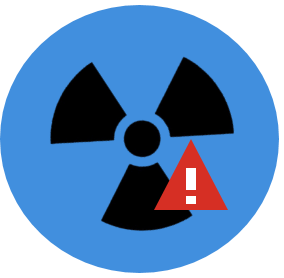The Philippine Nuclear Research Institute (PNRI), one of the research institutes under the Department of Science and Technology (DOST), is the agency mandated by the government to promote and regulate the safe and peaceful applications of nuclear science and technology in the Philippines. Its core functions are to conduct research and development on the use of radiation and nuclear technologies, operate and maintain nuclear research reactors, license and regulate activities that involve the use of radioactive materials, and provide nuclear services.
Radiation protection services are among the services provided by PNRI through the Radiation Protection Services Section (RPSS). The services provided are for users of ionizing radiation to monitor, assess and control exposures of the workers and ensure the safety of the members of the public. Among these is personnel monitoring services that aims to monitor the radiation exposure received by a worker in the workplace and assess whether it is within safe limits.
WHAT IS PhilDose?
In the Philippines, occupational exposure to ionizing radiation is monitored as required by national regulations. Aside from PNRI-RPSS, there are also private service providers of personnel dosimetry service. However, there is no centralized repository of dose records of all monitored workers. There is also no tracking of cumulative doses especially to those who worked at different facilities or workers from facilities who availed personnel monitoring services from various providers. The Philippine Dose Registry, thus, aims to establish a centralized databank of radiation dose exposure history of all radiation workers in the country.
The Philippine Dose Registry (PhilDose) is a web-based information system that contains radiation dose records of occupationally-exposed workers in the Philippines. The registry can store doses received from Gamma, Beta and Neutron radiation. The PhilDose, is the first Dose Registry for occupational radiation exposure in the Philippines. It is currently maintained and updated by the RPSS of PNRI.
The purpose of the Philippine Dose Registry is to assess exposure of workers to external sources of radiation. Currently, OSLDs (Optically Stimulated Luminescence Dosimeters) and TLD (Thermoluminescent Dosimeters) are used as personnel monitoring devices in the country. Personal doses are reported in terms of personal dose equivalent: Hp(10) for the whole body dose, and Hp(0.07) for skin dose. They are presented in units of milli-Sievert (mSv) which is characterized by the amount of biological damage a radiation does to the tissue. The current dose limits as per national regulations
are as follows:
(a) An effective dose of 20 mSv per year averaged over five consecutive years;
(b) An effective dose of 50 mSv in any single year;
(c) An equivalent dose to the lens of the eye of 150 mSv in a year; and
(d) An equivalent dose to the extremities (hands and feet) or the skin of 500 mSv in a year.
As numbers of monitored personnel is increasing over the years, having the PhilDose will allow better monitoring and assessment of occupational exposure profiles in the Philippines. The Registry is a means to track exposure history of workers in the country to monitor and assess their exposure profiles. It will result to an improved evaluation of risks associated with exposure to ionizing radiation. The implementation of the registry is vital in establishing more opportunities that will help strengthen the radiation protection infrastructure of the country.
Read More...









